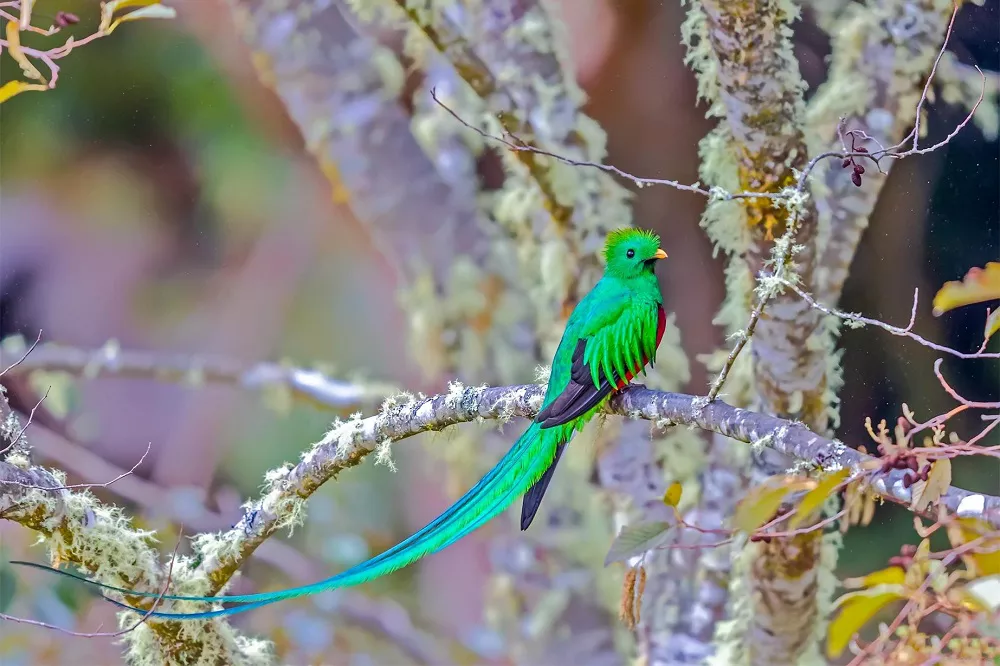The Resplendent Quetzal (Pharomachrus mocinno) is a stunning bird found in the cloud forests of Central America. It is considered one of the most beautiful birds in the world and has become an iconic symbol of the region.
Description
The Resplendent Quetzal is a medium-sized bird, measuring approximately 36 centimeters (14 inches) in length and weighing around 210 to 230 grams (7 to 8 ounces). It has a distinctive and colorful appearance, with bright green plumage on its back and wings, a red belly, and a long, iridescent green tail that can reach up to 60 centimeters (24 inches) in length. The male quetzal has a bright red chest, while the female has a more subdued greenish-gray chest.
Habitat and Distribution
The Resplendent Quetzal is found in the cloud forests of Central America, including Guatemala, Costa Rica, Panama, and Honduras. It prefers to live in areas of high elevation, typically between 1,500 to 3,000 meters (5,000 to 10,000 feet), where the climate is cooler and more humid.
Behavior
The Resplendent Quetzal is a solitary bird, typically seen alone or in pairs. It is a skilled flyer and can maneuver through the dense forest with ease, using its long tail feathers to steer and balance in flight. The quetzal is also known for its distinctive call, which is a series of clear, flute-like notes.
Diet
The Resplendent Quetzal feeds primarily on fruits, but also eats insects and small animals such as lizards and frogs. It plays an important role in the ecosystem by dispersing seeds throughout the forest as it feeds on fruits.
Lifespan
The lifespan of a resplendent quetzal is typically between 10 to 15 years in the wild. However, some individuals have been known to live up to 20 years in captivity. The lifespan of this bird is influenced by a variety of factors, including habitat quality, food availability, predation risk, and disease.
Reproduce
Resplendent quetzals reach sexual maturity at around 2 to 3 years of age. They form monogamous pairs during the breeding season and lay 2 to 3 eggs in a tree cavity or a nest made of sticks and leaves. The male quetzal is known for his striking plumage, which includes a long tail with two elongated feathers that can reach up to 3 feet in length. The female quetzal has a shorter tail and a duller plumage, which allows her to blend in with her surroundings and protect the eggs from predators.
Conservation
The Resplendent Quetzal is considered a species of conservation concern due to habitat loss and fragmentation caused by deforestation and agriculture. The bird’s bright feathers have also made it a target of poaching and illegal trade. Conservation efforts have been put in place to protect the quetzal and its habitat, including the creation of protected areas and the promotion of sustainable land use practices.
Conclusion
The Resplendent Quetzal is a beautiful and iconic bird that is highly valued in Central American culture. Its bright colors and unique appearance have made it a symbol of the region’s natural beauty and biodiversity. As habitat destruction and poaching continue to threaten the species, it is important that we work together to protect this magnificent bird and its habitat for future generations to enjoy.
Related Topics:


 Facebook
Facebook  Instagram
Instagram  Youtube
Youtube 